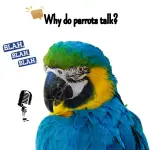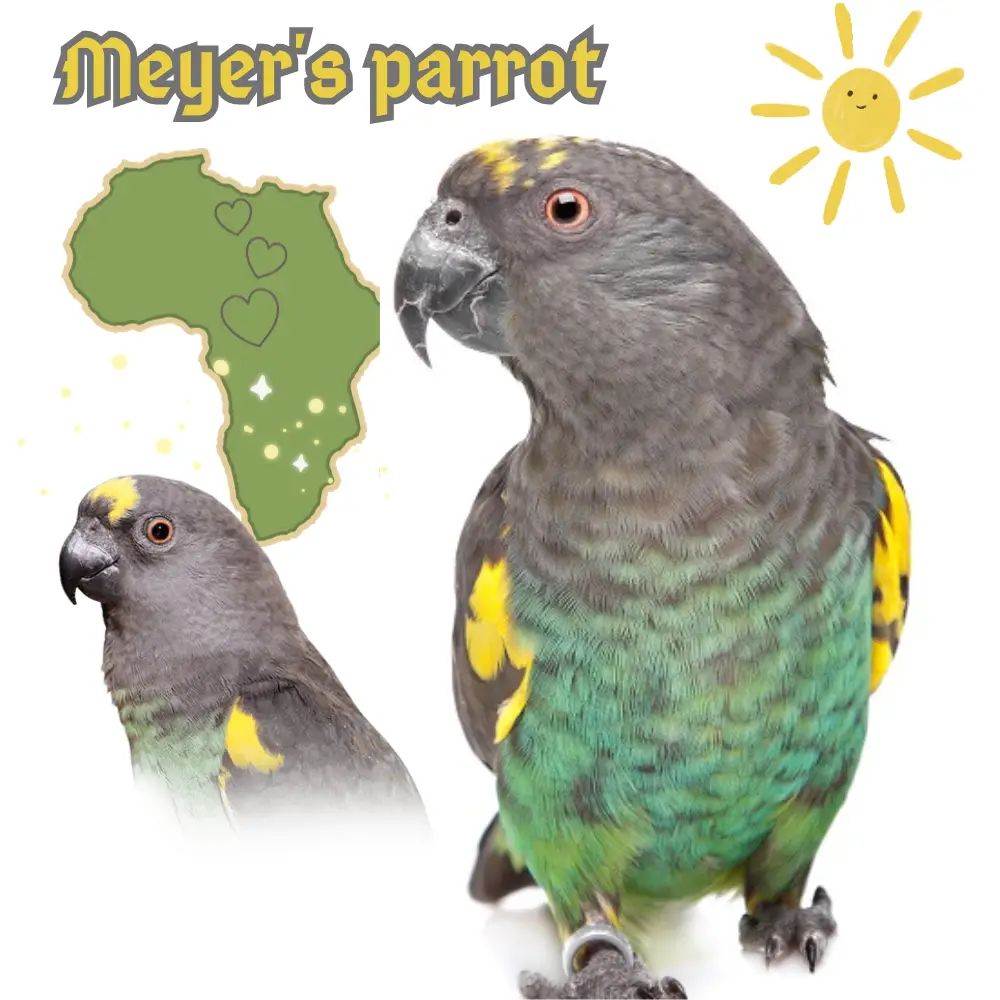
The Meyer’s parrot ( Poicephalus meyeri ), also known as the brown parrot, is a species of parrot that is native to Africa. The Meyer’s parakeet has black plumage, a turquoise belly, a blue rump, and bright yellow markings on the carpal joint of the wings.
Most subspecies of this parrot have some yellow coloration on the top of the head area as well. Forshaw (1989) described six subspecies of Meyer’s parakeet – P. meyeri, which differ from each other in their range and habitat, size, and coloration, including the color of the yellow markings on the head and wings and the color of the dense turquoise markings on the abdomen and rump.
The Meyer’s parrot has a gray-brown head, nape, and upper chest. Its back and wings are blackish gray and its feathers are edged with green.
Its breast and undertail coverts range from a grayish blue to a magnificent turquoise blue. Its belly is green. Its rump is blue.
Adult Meyers have yellow thighs as well as the curvature of the wing and the underside of the wing cover. This yellow is already present at the curvature of the wings in young birds but it is much less pronounced and less extensive. Still, as adults, the majority of Meyers have a yellow stripe on the crown which appears around 1 year of age.
The iris of young people is dark brown, turning orange-red in adulthood with a black eye ring. The bill is entirely black and the legs are dark gray.
Classification: Poicephalus meyeri
Size of the species: It weighs approximately 110 grams and measures 21 centimeters.
Distribution: The Meyer’s parrot is found from Cameroon to Mozambique via Zaire, Sudan, Angola, Uganda, Rwanda, Tanzania, Kenya, etc.
It is the species with the largest distribution area.
Meyer’s Parrot subspecies
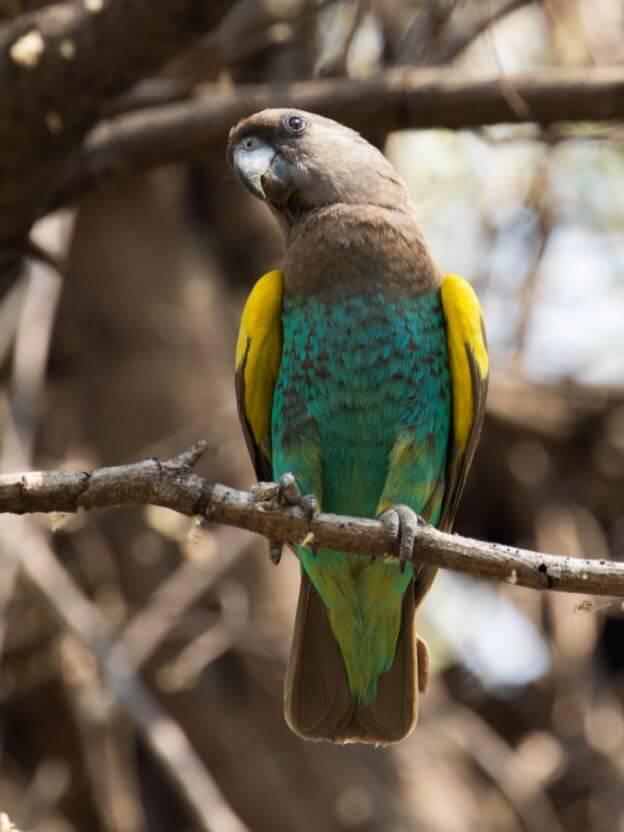
- Poicephalus meyeri damarensis known as Meyer’s parrot of Damaraland: Same size as the main subspecies, plumage colors are different. The head and upper breast are darker, as are the back and wing coverts. The rump is a lighter blue and the lower chest and belly are turquoise blue. This subspecies rarely displays the yellow crown typical of Meyer’s parrot.
- Poicephalus meyeri matshiei known as Meyer’s parrot from East Africa: A little larger than the main subspecies, the head as well as the back and the wing coverts are darker. The rump is a brighter blue and the belly is also brighter with a blue ranging from turquoise to light blue. The yellow crown is present.
- Poicephalus meyeri reichenowi known as Meyer’s parrot from Angola: Larger than the main subspecies, about 3 centimeters, it is also fatter. It has the characteristics of matchiei but the crown is absent in this subspecies. We also notice that its plumage on the belly is dotted with black.
- Poicephalus meyeri saturatus known as Meyer’s parrot from Uganda: Is very similar to matshiei. Crown present.
- Poicephalus meyeri transvaalensis known as the South African Meyer’s parrot: Subspecies are similar to saturatus but the rump is greenish with blue feathers. The crown is present in most cases.
Meyer’s parrot is common in the wild, inhabiting wooded but open areas. It lives in pairs or small groups, sometimes in large numbers when food is abundant. It is a sedentary bird with rapid and direct flight which it performs at low height and sleeps in cavities.
Where do Meyers parrots live?
What do Meyer parrots eat?
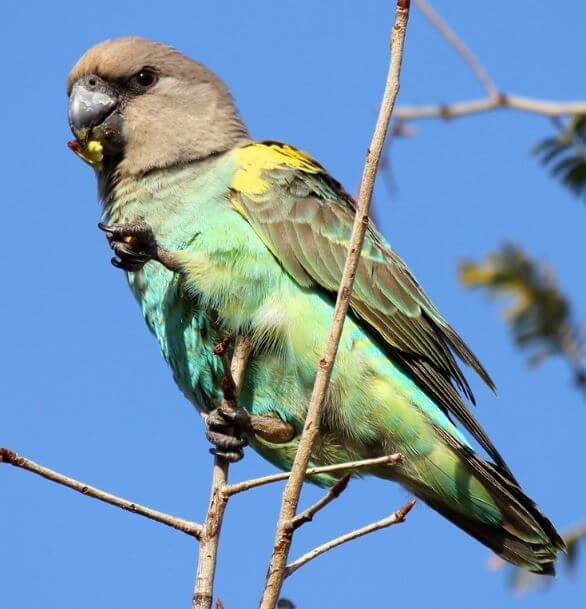
In nature, Meyer’s parrots feed on fruits, seeds, nuts, berries, and cultivated crops. It especially prefers the seeds of leguminous trees widespread in African forests
It is normal to find them gathering in pairs or small flocks, but when food is abundant, they gather in large numbers. However, during periods of drought and drought, they wander in search of food everywhere in the African forest.
As for captivity, they are fed, like their counterparts, Senegal parrots, on a mixture of grains consisting of canary grass, white corn, yellow corn, oats, millet, red bulgur, niger, flax seeds, anise seeds, thistle, sesame, and safflower. Vitamin granules are provided with iodine to prevent the occurrence of thyroid problems, and fruits such as apples, bananas, and fresh fruits. Vegetables, carrots, cucumbers, nuts…
The breeder must be careful to store the grains properly in a dark, well-ventilated place. Do not use plastic bags, preferably cloth bags.
How can you tell if a Meyer parrot is male or female?
With experience, an experienced breeder can differentiate between them by their head and beak. Males have a larger head and beak than females.
However, the distinction is made fundamentally and definitively using either surgery, laparoscopy, or DNA analysis.
Meyer’s parrots reach the age of 3 to 4 years, and the breeding season begins in the winter months in the Arab countries and the Middle East, or the end of the rainy season in Africa and in America, from March to June.
In the wild, Meyer’s parrots make their nests in tree cavities
Are Meyers parrots noisy?
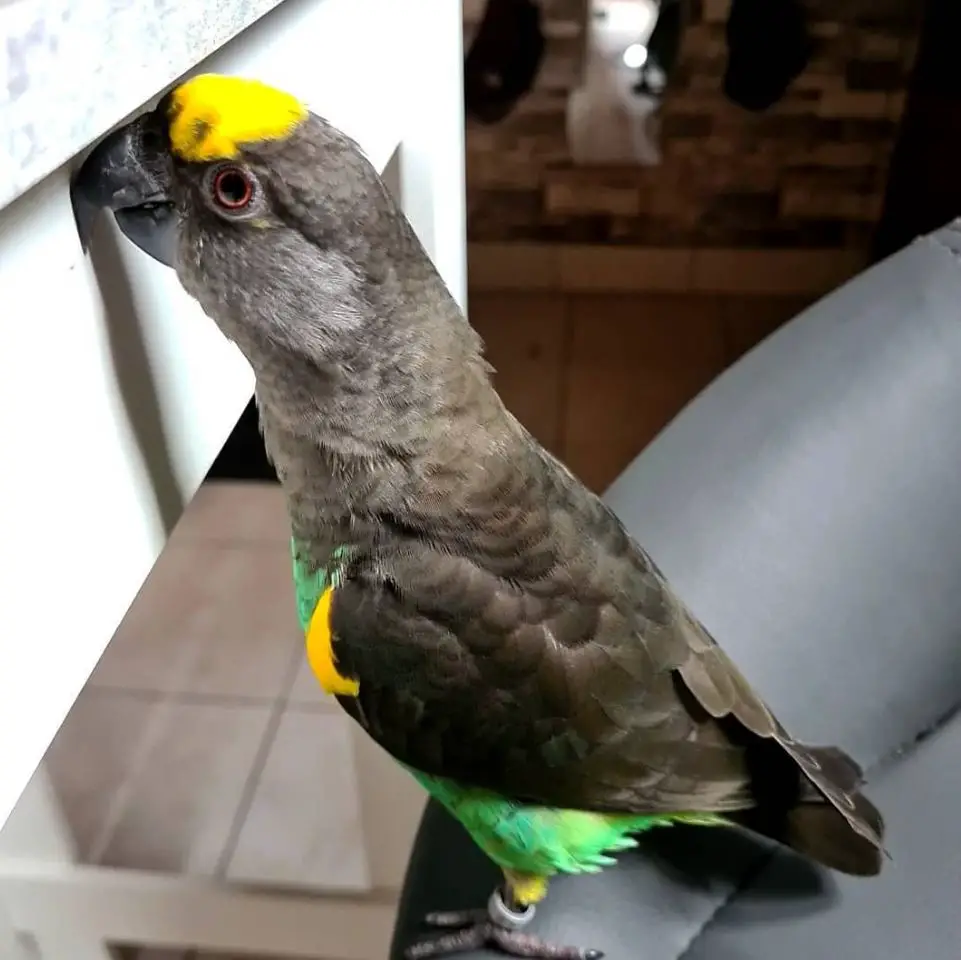
What is the personality of a Meyer’s parrot?
At first glance, the amateur feels that they are similar, but of course, the expert and experienced amateur can easily distinguish them from afar.
Meyers are affectionate and calm birds, and they have a very playful personality, like conure parrots. They love to play, and you may find them falling on their backs from playing. Therefore, the hobbyist must provide them with appropriate toys in their cages in case they do not want to hatch.
He also puts hardwood for them to chew, and some of them may be careful with individuals. They were new and did not adapt to them, while many of them quickly became accustomed to strangers, even with strangers.
SOURCE: HandyDandyCrafts


